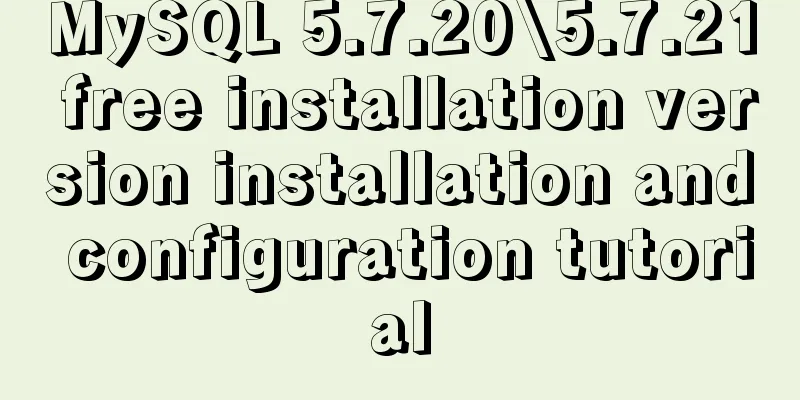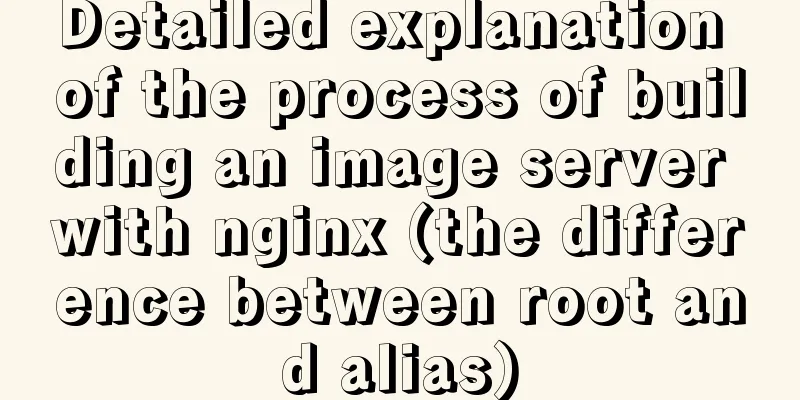MySQL 5.7.20\5.7.21 free installation version installation and configuration tutorial

|
mysql download, install and configure 5.7.20 / 5.7.21 for your reference. The specific contents are as follows 1. Download mysql, download address
Select the operating system and version. I am using 64-bit win10. After clicking Download, you will be redirected to the Oracle login page and asked to log in before downloading:
Log in to download:
2. Unzip after downloading:
3. Create the my.ini file in the mysql directory, as shown above. The file content is as follows. Change basedir and datadir to the corresponding addresses: [mysql] # Set the default character set of the mysql client to default-character-set=utf8 [mysqld] #Set port 3306 port = 3306 # Set the installation directory of mysql basedir=D:/tools/ent/db/mysql-5.7.20-winx64 # Set the storage directory of mysql database data datadir=D:/tools/ent/db/mysql-5.7.20-winx64/data # Maximum number of connections allowed max_connections=200 # The default character set used by the server is the 8-bit latin1 character set character-set-server=utf8 # The default storage engine that will be used when creating a new table default-storage-engine=INNODB 4. Enter the bin directory with cmd and execute mysqld --initialize-insecure \mysql-5.7.20-winx64\bin>mysqld --initialize-insecure 5. Then execute mysqld -install mysql-5.7.20-winx64\bin>mysqld -install The prompt "Service successfully installed" indicates that the installation is successful. 6. Start the service D:\tools\ent\db\mysql-5.7.20-winx64\bin>net start mysql 7. Stop service D:\tools\ent\db\mysql-5.7.20-winx64\bin>net stop mysql 8. Log in to MySQL D:\tools\ent\db\mysql-5.7.20-winx64\bin>mysql -uroot -p Enter password: ****** Welcome to the MySQL monitor. Commands end with ; or \g. Your MySQL connection id is 6 Server version: 5.7.20 MySQL Community Server (GPL) Copyright (c) 2000, 2017, Oracle and/or its affiliates. All rights reserved. Oracle is a registered trademark of Oracle Corporation and/or its affiliates. Other names may be trademarks of their respective owners. Type 'help;' or '\h' for help. Type '\c' to clear the current input statement. mysql> show databases; +--------------------+ | Database | +--------------------+ | information_schema | |api| |ibase4j| | jpress | |mysql | | performance_schema | |srmhome| |sys| | wordpress | +--------------------+ 9 rows in set (0.00 sec) mysql> Finish! The above is the full content of this article. I hope it will be helpful for everyone’s study. I also hope that everyone will support 123WORDPRESS.COM. You may also be interested in:
|
<<: How to configure user role permissions in Jenkins
>>: Detailed explanation of how to find the location of the nginx configuration file
Recommend
How to set up jar application startup on CentOS7
Pitfalls encountered during project deployment Wh...
Detailed explanation and summary of the URL for database connection
Detailed explanation and summary of the URL for d...
Detailed explanation of CSS multiple three-column adaptive layout implementation
Preface In order to follow the conventional WEB l...
About the layout method of content overflow in table
What is content overflow? In fact, when there is ...
About the correct way to convert time in js when importing excel
Table of contents 1. Basics 2. Problem Descriptio...
Nginx reverse proxy to go-fastdfs case explanation
background go-fastdfs is a distributed file syste...
4 ways to view processes in LINUX (summary)
A process is a program code that runs in the CPU ...
Sharing the structure and expression principles of simple web page layout
Introduction to structure and performance HTML st...
Common shell script commands and related knowledge under Linux
Table of contents 1. Some points to remember 1. V...
Solve the problem of Syn Flooding in MySQL database
Syn attack is the most common and most easily exp...
Steps to set up HTTPS website based on Nginx
Table of contents Preface: Encryption algorithm: ...
How to reset MySQL root password under Windows
Today I found that WordPress could not connect to...
Ubuntu Docker installation in vmware (container building)
1. Mind Map 2. How to build a container 2.1 Prepa...
Python writes output to csv operation
As shown below: def test_write(self): fields=[] f...
The latest MySQL 5.7.23 installation and configuration graphic tutorial
The detailed installation and configuration of th...













